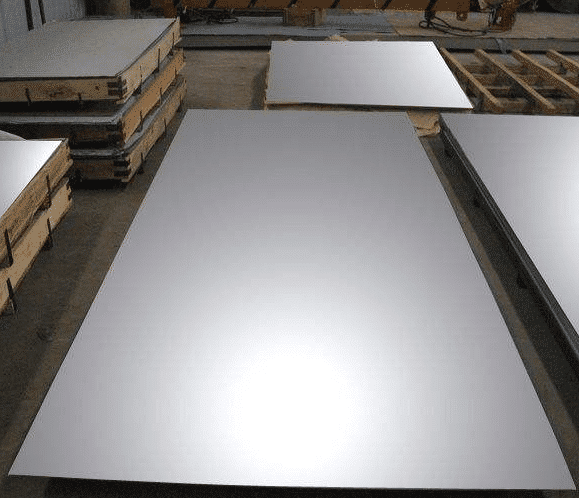
stainless steel is used for corrosive environments. By adding some amounts of elements, such as nickel and chromium, outstanding corrosion resistance are obtained. To correctly select the grade right for the project. We share this blog about few common grades of stainless steel to get you preliminarily understand them.
Classification of all common STSs by their component
According to the composition, it can be divided into Cr system (SUS 400), Cr-Ni system (SUS 300), Cr-Mn-Ni system (SUS 200) and precipitation hardening system (SUS 600).
200 Series-Chromium-Nickel-Manganese Austenitic Stainless Steel
300 Series-Chromium-Nickel Austenitic Stainless Steel
301-good ductility, used for molding products. It can also be rapidly hardened by mechanical processing. Good weldability. The wear resistance and fatigue strength are better than 304 stainless steel.
302-Corrosion resistance is the same as 304, and its strength is better because of its relatively high carbon content.
303 – By adding a small amount of sulfur and phosphorus, it is easier to cut than 304.

304-18/8 stainless steel. GB is 0Cr18Ni9, which has better temperature resistance than 304.
After 316-304, the second most widely used steel is mainly used in the food industry and surgical equipment, adding molybdenum to obtain a special corrosion-resistant structure. Because of its better chloride corrosion resistance than 304, it is also used as “marine steel”. SS316 is usually used in nuclear fuel recovery devices. Stainless steel grade 18/10 usually meets this application level.
Model 321 – Except for reducing the risk of corrosion due to the addition of titanium, the performance of the material is similar to 304.
400 Series – Ferritic and Martensitic Stainless Steel
408-Good heat resistance, weak corrosion resistance, 11% Cr, 8% Ni.
409 – The cheapest model (British and American), usually used as an automobile exhaust pipe, belongs to ferritic stainless steel (chromium steel).
410-martensite (high strength chromium steel), good wear resistance, poor corrosion resistance.
416 – Adding sulfur improves the processability of the material.
420-blade grade martensitic steel, the earliest stainless steel like Brinell high chromium steel. It’s also used for surgical knives and can be made very bright.
430-ferritic stainless steel for decorative purposes, such as automotive jewelry. Good formability, but poor temperature resistance and corrosion resistance.
440-high strength cutting tool steel, with slightly higher carbon content, can obtain higher yield strength after proper heat treatment, and its hardness can reach 58HRC, which belongs to the hardest stainless steel. The most common example of application is the razor blade. There are three common models: 440A, 440B, 440C, and 440F (easy-to-process).

500 series – heat resistant chromium alloy steel.
600 Series-Martensite Precipitation Hardening Stainless Steel.
630 – The most commonly used type of precipitation hardening stainless steel, also known as 17-4; 17% Cr, 4% Ni
Differentiation of Stainless Steel 201 and 304
1. Specification: The commonly used stainless steel sheets are divided into 201 and 304 models. Actually, the composition is different. 304 is of better quality, but the price is expensive and 201 is worse. 304 is imported stainless steel plate, 201 is domestic stainless steel plate.
2. 201 is composed of 17Cr-4.5Ni-6Mn-N, which is substitute steel for saving Ni and 301 steel. It has magnetism after cold processing and is used for railway vehicles.
3. 304 is composed of 18Cr-9Ni, which is the most widely used stainless steel and heat-resistant steel. Used in food production equipment, chemical equipment, nuclear energy and so on.
304 stainless steel plate performance characteristics and uses:
As the most widely used stainless steel heat-resistant steel, food equipment, general equipment, atomic energy industrial equipment. 304 is the most common steel with good corrosion resistance, heat resistance, low-temperature strength, and mechanical properties. Deep stamping, bending and another normal temperature processing performance is good, heat treatment will not harden. Household 1 or 2 kinds of Western tableware, Sink, indoor piping, water heater, bathtub, boiler, automobile parts (a window cleaner, return pipe), medical machinery, building materials, chemistry, food industry, textile industry, cheese industry, ship parts, and components
(Non-magnetic, service temperature: -196-800 C)
What is 316 stainless steel?

316 stainless steel plate is a brand under American standard, which belongs to stainless, heat-resistant and corrosion-resistant steel. It is austenitic stainless steel. For the national standard, it is Cr17Ni12Mo2. It is better than 304 stainless steel. In seawater and other media, it has better corrosion resistance than Cr19Ni9, mainly pitting corrosion-resistant material.
What is 430 stainless steel?

430 stainless steel is general steel with good corrosion resistance. Its thermal conductivity is better than that of austenite. Its coefficient of thermal expansion is smaller than that of austenite. It has good thermal fatigue resistance. The mechanical properties of the weld seam are better when adding stabilized element titanium. 430 stainless steel is used for building decoration, fuel burner parts, household appliances, and household appliances. 430F is a kind of steel with free cutting property added to 430 steel. It is mainly used for automatic lathes, bolts, and nuts. 430LX adds Ti or Nb to 430 steel, reduces C content, improves processing performance and welding performance. It is mainly used in hot water tank, heating water system, sanitary appliances, household durable appliances, bicycle flywheel and so on.
Because of its chromium content, it is also called 18/0 or 18-0. Compared with 18/8 and 18/10, the chromium content is slightly less and the hardness decreases accordingly.
What is 439 stainless steel?

The steel grade reduces C content on the basis of ordinary ferrite material (430) and adds stabilizing elements such as Ti, which improves the intergranular corrosion resistance, formability and weldability of the steel grade. Compared with 304 steel, although elongation is low (about 30%), its strength and corrosion resistance are comparable, and its corrosion resistance is better than 200 series materials.
Main Use |: Elevator, escalator decoration board, building decoration board, such as decorative structural parts, structural pipes, automobile exhaust system components, washing machine inner cylinder
Last week we’ve shared a blog about super stainless steel. Hopefully, with them, you’ve learned further about the lore of STS.









